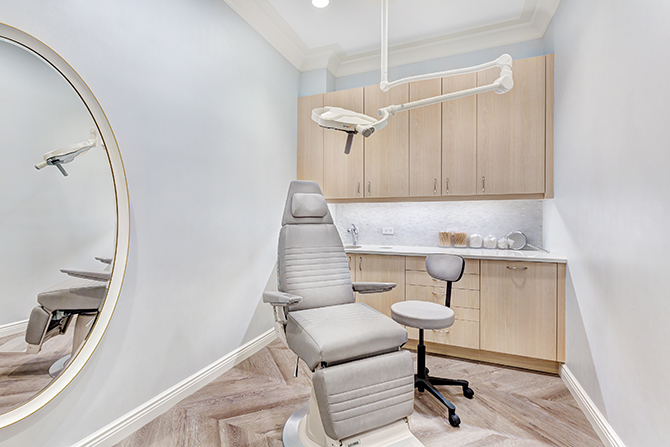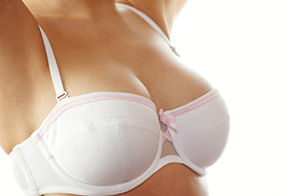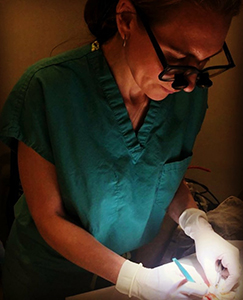BREAST AUGMENTATION
10 Things You Should Know

By Shana Ackerman
Does having to wear a padded bra to camouflage your A cup breasts frustrate you? There is no doubt that you should love who you are and how you look. But sometimes loving who you are or how you look means doing something about how you want to appear. If you are tired of having small breasts, or childbirth took its toll on your breasts, then perhaps it is time to visit a plastic surgeon.

According to the American Society of Plastic Surgeons, breast augmentation was one of the top five cosmetic surgical procedures performed in 2017. We spoke with nationally recognized, New York-based Board Certified Plastic Surgeon, Dr. B. Aviva Preminger about her experiences with breast augmentation. “At least one out of five people who call my office each week wants to discuss options for a breast augmentation,” says Dr. Preminger, “and today, it is not just young ladies looking to increase their breast size, but women of all ages. So many women are looking to give themselves symmetry, larger or smaller breasts, revise their previous augmentation, and to restore their appearance to prior childbirth and nursing.”
New York Lifestyles recently met with Dr. Preminger to find what women should ask their plastic surgeon when considering breast augmentation. Here, her expert advice to keep in mind.

What will my doctor ask me?
You may feel a bit exposed baring it all to your surgeon, but it is a necessity in your quest for a surgical procedure. Your surgeon will ask you what it is, exactly, that you dislike about your breasts, and what it is you want to achieve. The more you share, the better your doctor will be able to help you decide the best course of action to take. You and your surgeon will discuss desired breast shape and size, types of implants, surgery options, scarring, recovery, and expected outcome. In addition to talking about what you want, your surgeon will conduct a visual exam and complete a comprehensive review of your medical history to make sure you are a good candidate for your procedure.
Will a breast augmentation, alone, help me to achieve my desired result?
In some cases, a breast augmentation alone will not achieve the desired results. If your nipples point downward or if your areola is disproportionally sized, implants alone may not fully achieve your desired effect. In some cases, a breast lift to remove and tighten extra skin and reposition the nipples or an areola or nipple reduction may be required for better shape and appearance. You and your surgeon will discuss and decide if any additional procedures are necessary to achieve your desired result.
Can I preview my new breasts?
Choosing the right breast shape and size can be confusing and stressful. There are so many options available and making this decision should not be taken lightly. I believe that this is the most important decision a woman can make about her breast augmentation surgery, and because it can significantly help her achieve the desired result, I have incorporated Crisalix 3D Imaging into my practice. This technology allows my patients to see their body in 3D and from there we can simulate any breast size and shape. It is amazing that my patients can view their “new breasts” before they even schedule their surgery!
What types of implants are available?
There are two types of breast implants: saline and silicone. Saline implants can provide a uniform shape, firmness, and feel. Recently, a new type of saline breast implant called IDEAL was added to the market. IDEAL implants consist of a series of implant material shells nested together with two separate chambers that contain saline. The advanced structure controls the movement of the saline and supports the implant edges, reducing collapse and wrinkling. This amazing implant provides my patients with a youthful look and natural feel. The other implant option is silicone. Silicone gel feels more like a natural breast. There are round implants, teardrop-shaped implants, smooth implants, and textured implants. The various types of implants give patients many options, and all of these options should be discussed with your surgeon.
How is the surgery performed?
Breast augmentation surgery can be performed in one of two ways: under the muscle (submuscular) or behind the breast tissue (submammary/subglandular). The position of the implant will depend on the type of implant, the desired enlargement, and your body type. Your surgeon should discuss both options to determine the best method to achieve your ideal result.
How long will my recovery take?
Every woman is unique in their recovery process, but generally speaking, most woman return to work four to seven days following surgery, resume light exercise after two weeks, resume strenuous activity after six weeks, and after about 12 weeks most swelling is resolved. Some women may feel they can go back to work immediately, but it is best if they take it easy for at least four to seven days and not overexert themselves.

Will I have scars after my breast augmentation?
When performing a breast augmentation, the incisions are made in inconspicuous areas to minimize visible scarring. The incision size will vary based on the type of implant, desired enhancement, and the patient’s physique. It is important to discuss the incision options with your surgeon and for the two of you to decide which incision is appropriate for your desired outcome. Incision options that I utilize include around the areolar edge, the fold under the breast, or in the armpit. There is also a belly-button approach, but I do not use this because it provides limited access to the breasts. As much as I wish surgery were a scar-free process, it is simply not possible. However, proper care following your procedure can reduce visible scarring, and many of my patients find that the scars are nearly invisible 18 to 24 months post-surgery.
How long will my breast augmentation last?
Nothing lasts forever. Some implants last over 20 years without incident while other implants may only last for five to seven years. If there is a concern that there is a change in contour, shape, size, hardening in areas or strange pain or discomfort is noticed, a visit to your surgeon should be scheduled immediately.
What about getting screened for breast cancer after I have breast implants?
A mammogram is a gold standard for annual breast health screenings starting at age 40. A breast implant does not prevent a woman from having her breast cancer screening. It is important to let the technician know if you have breast implants, as additional imaging is necessary to visualize the breast tissue and implant integrity better.
There is a lot to consider and learn about breast augmentation surgery. There are many options you will need to discuss with your plastic surgeon in order to develop the best treatment that you will be most comfortable with. Being informed and ready to ask questions will create a great consultation with your surgeon and ensure both you and the surgeon are on the same page. Dr. Preminger says, “Finding a board certified plastic surgeon that you are comfortable with may take some time, but it is the most important step in the process. Do not be afraid to ask for qualifications or to look at before and after photos. You should always feel comfortable with the procedure, the results, and the surgeon.”
For more information on B. Aviva Preminger, M.D., F.A.C.S. (969 Park Avenue, Suite 1E; 212-706-1900), visit premingermd.com.




